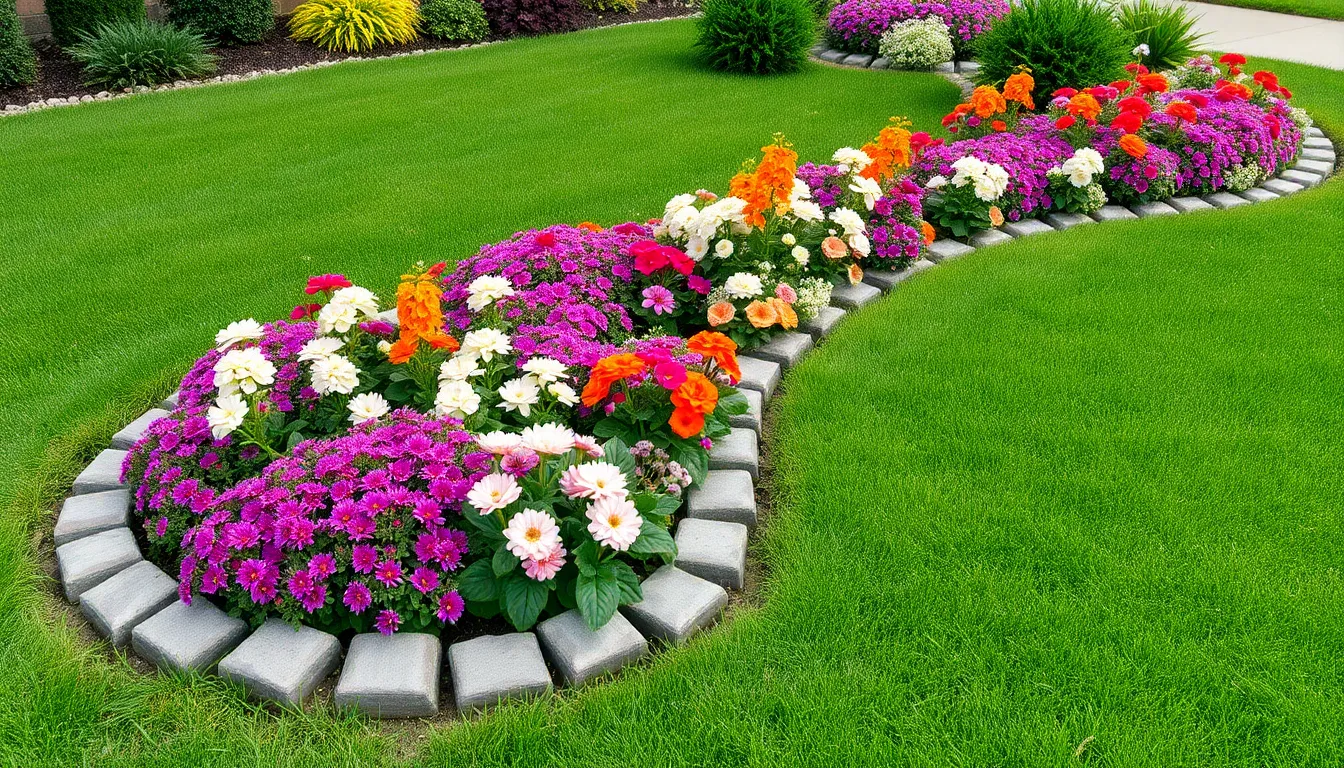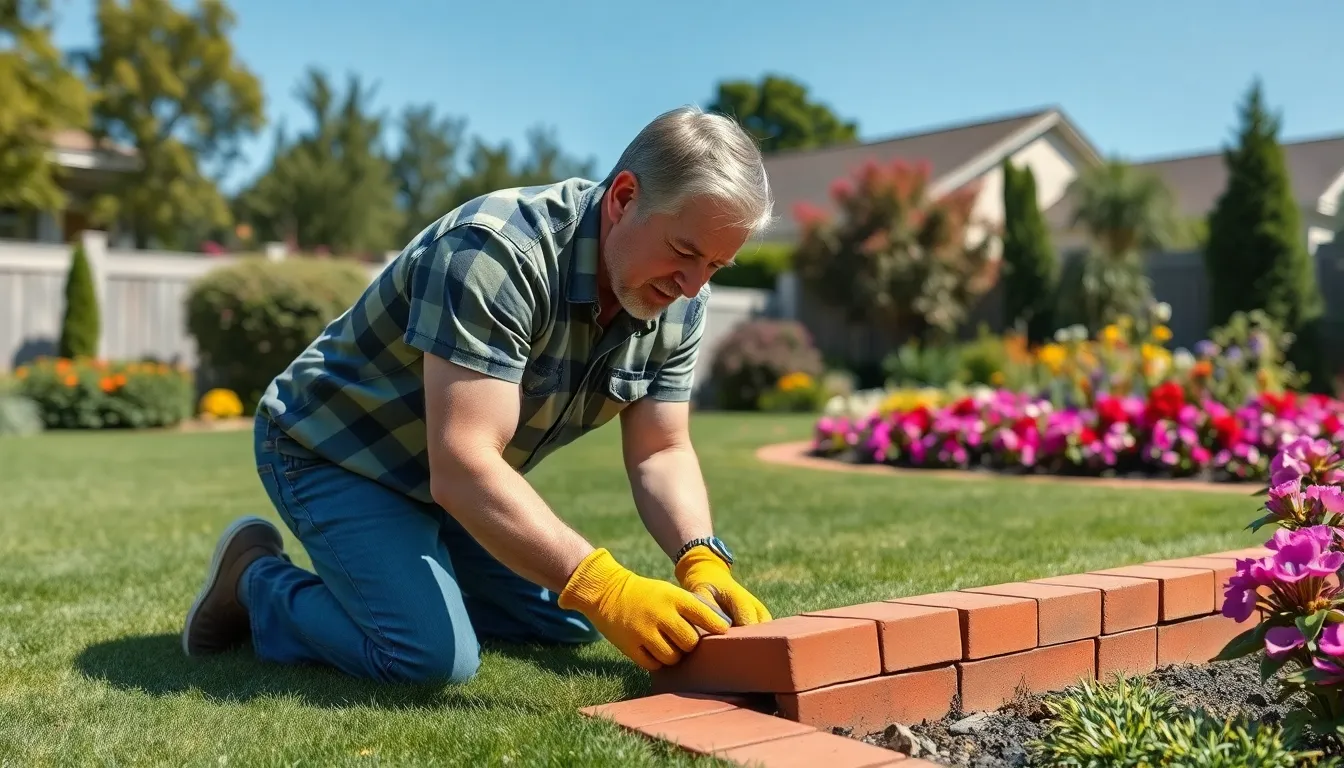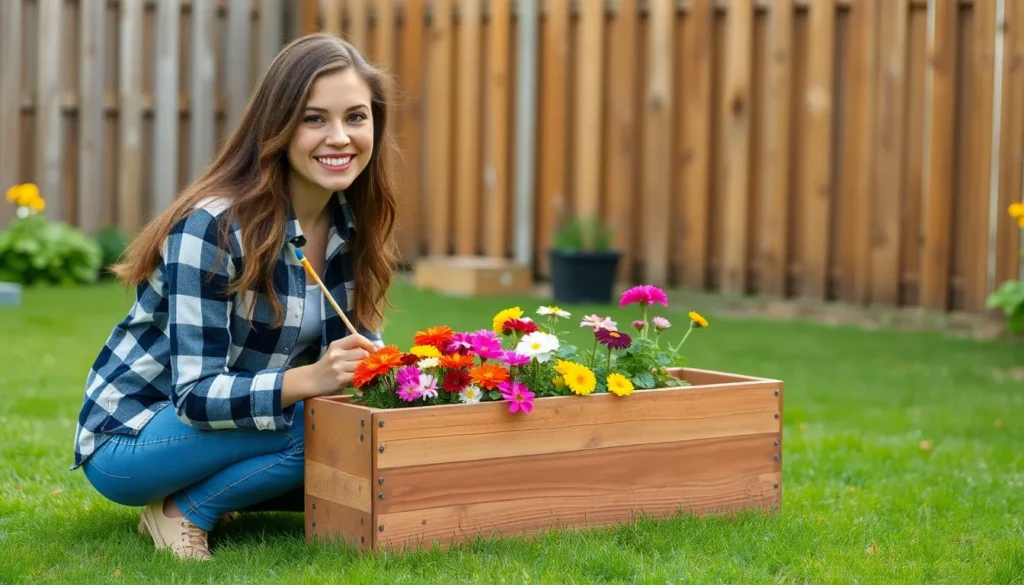A garden without edging is like a cake without frosting—sure, it’s still a garden, but it’s missing that essential touch that makes it truly delightful. Installing garden edging not only defines your garden’s boundaries but also keeps those pesky weeds from crashing the party. Think of it as giving your plants a stylish fence to show off their best side.
But wait! Before you grab a shovel and start digging, let’s chat about the benefits and options available. From charming brick to sleek metal, there’s an edging style for every personality—even yours! So let’s dive into the world of garden edging and transform your outdoor space into the envy of the neighborhood. Who knew landscaping could be this much fun?
Table of Contents
ToggleOverview of Garden Edging
Garden edging serves as both a functional and aesthetic component of landscape design. It defines the edges of flower beds, lawns, and pathways, creating clear boundaries that enhance the garden’s overall structure. Additionally, this feature helps prevent aggressive grass and weeds from encroaching on cultivated areas.
Materials for garden edging vary widely. Common options include brick, stone, metal, and plastic. Each material offers distinct advantages. Brick provides a classic look, while metal adds a modern touch. Wooden edging can blend seamlessly into natural surroundings, although it may require more maintenance over time.
Installation of garden edging is a straightforward process. First, determine the desired shape and layout of the garden beds. Second, prepare the ground by removing grass and debris to ensure a clean line. After that, position the edging material into the prepared space. The final step involves securing the edging firmly in place to withstand weather elements.
Beyond functionality, garden edging enhances visual appeal. It creates a neat, organized look that can elevate any outdoor space. Various styles, including decorative and minimalist designs, cater to diverse aesthetic preferences. Homeowners can choose options that complement existing landscaping elements, ensuring cohesive design.
Consideration of terrain and climate is crucial when selecting and installing garden edging. Certain materials may perform better in specific environments. For instance, metal edging offers durability in areas with heavy rainfall. Understanding these factors allows for a well-informed choice, resulting in a beautiful, lasting garden feature.
With the right approach, garden edging transforms ordinary landscapes into extraordinary outdoor spaces. The combination of practicality and style makes it a worthwhile investment for any gardening enthusiast.
Benefits of Garden Edging

Garden edging offers numerous advantages, enhancing both the visual and functional aspects of outdoor spaces.
Aesthetic Appeal
Visual appeal stands out as a primary benefit of garden edging. Edging creates a defined border around flower beds and lawns, resulting in a polished look. Presence of various materials, such as brick, stone, and metal, allows homeowners to choose styles that match their landscape design. Contrasting colors and textures enhance the beauty of gardens, making them more inviting. Additionally, defined edges prevent overgrown plants from invading neighboring areas, maintaining a tidy appearance. It’s easy to see how garden edging can elevate the overall aesthetics of any outdoor setting.
Functional Advantages
Functionality plays a crucial role in the benefits of garden edging. Edging effectively contains soil and mulch, preventing erosion and maintaining structure during heavy rains. Protection against weeds and invasive grass is another key advantage, as it creates a barrier to keep unwanted growth at bay. Garden edging also aids in drainage by guiding water flow and minimizing pooling in plant beds. Additionally, clear boundaries help demarcate paths and zones within a garden, enhancing organization. Selecting the right edging material ensures functionality aligns with the landscaping goals.
Types of Garden Edging Materials
Choosing the right garden edging material enhances both functionality and aesthetics. It also helps define garden spaces clearly, complementing the overall landscaping.
Natural Materials
Natural materials offer organic beauty with appealing textures. Stone provides durability and a rustic look, while brick adds charm and can be laid in various patterns. Wood, though less lasting, brings warmth and fits well in cottage-style gardens. These materials blend seamlessly with plant life, promoting a harmonious appearance in outdoor spaces. The installation of natural materials typically involves digging into the ground and securing the edges firmly, ensuring they withstand the elements.
Synthetic Materials
Synthetic materials are practical alternatives for garden edging. Plastic edging is lightweight and flexible, allowing creative layouts without breaking easily. Metal options such as aluminum provide a sleek, modern finish, resisting rust and corrosion. Composite materials combine durability and aesthetics, offering a look similar to wood without the maintenance. The installation process for synthetic materials often involves straightforward digging and placing, making them accessible for many gardeners looking to define their landscapes effectively.
Steps to Install Garden Edging
Installing garden edging involves careful planning, preparation, and execution. Each step contributes to achieving a beautiful and functional landscape.
Planning Your Garden Layout
Begin by visualizing the desired shape of the garden bed or pathway. Sketch a rough design on paper, incorporating curves or straight lines as preferred. Prioritize functionality by considering the plant types and their spacing. Identify potential challenges, such as existing plants or obstacles. Mark the layout using stakes and string to create a clear outline. This step ensures an organized and effective installation process.
Preparing the Site
Clear the area of debris, grass, and weeds to create a clean workspace. Utilize a spade or shovel for removing sod and loosening soil. This preparation helps establish a solid foundation for the edging material. Adjust the soil level according to the edging height to maintain a consistent appearance. Wetting the soil can make it easier to work with, especially in dry conditions. Finally, compact the soil to enhance stability before moving on to the next phase.
Installing the Edging
Align the chosen edging material along the marked outline to ensure a proper fit. Follow the manufacturer’s instructions for specific installation requirements, particularly for brick or stone types. Begin embedding the edging into the soil, maintaining a level and even edge. Secure the materials tightly to prevent shifting or movement over time. Use a mallet to achieve the desired depth without damaging the material. Fill in any gaps with soil or mulch to create a finished look, enhancing both function and appearance.
Maintenance Tips for Garden Edging
Regular maintenance keeps garden edging looking its best. Check for any shifting or damage after heavy rainfall or during seasonal changes. Realigning the edging may be necessary to maintain a neat appearance.
Weed control is pivotal for preserving the integrity of the garden edging. Pull weeds as soon as they emerge to prevent them from taking root along the edges. Mulching around the borders can also inhibit weed growth effectively.
Inspect joints and connections for signs of wear. Cracks or separations in materials like plastic or wood can develop over time. Replace any damaged sections promptly to maintain the overall structure.
Cleaning the edging contributes to its longevity and aesthetic appeal. A simple rinse with water removes dirt and debris. For tougher stains, a gentle scrub with soapy water can restore its original appearance.
Consider seasonal adjustments for specific materials. For example, metal edging may need some rust protection treatments during winter months. Applying a sealant to wooden borders can also help resist moisture damage.
Keeping the surrounding garden tidy enhances the visual impact of the edging. Trim overhanging plants to prevent them from overshadowing the border. Regular pruning ensures that the garden remains well-defined and lively.
Assess the edging’s effectiveness in preventing soil erosion and weed encroachment. Adjustments may be necessary if soil levels shift significantly in rainy conditions. Maintaining a clear distinction between garden beds and lawns supports the intended design.
Lastly, periodic inspections allow for early problem detection, ensuring long-lasting beauty and functionality. A proactive approach to maintenance results in an attractive and organized landscape.
Garden edging is more than just a decorative element; it’s a vital component that enhances the beauty and functionality of any outdoor space. By carefully selecting the right materials and following proper installation techniques, gardeners can create defined boundaries that not only elevate aesthetics but also protect plants from invasive weeds and erosion.
Regular maintenance is essential to ensure the longevity and effectiveness of the edging. With proper care, garden edging will continue to provide structure and style for years to come. Investing time and effort into this aspect of gardening can lead to a more organized and visually appealing landscape that reflects individual tastes and enhances outdoor enjoyment.





